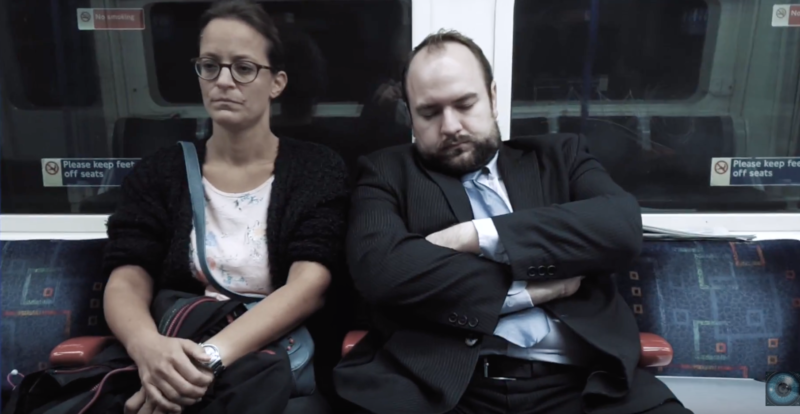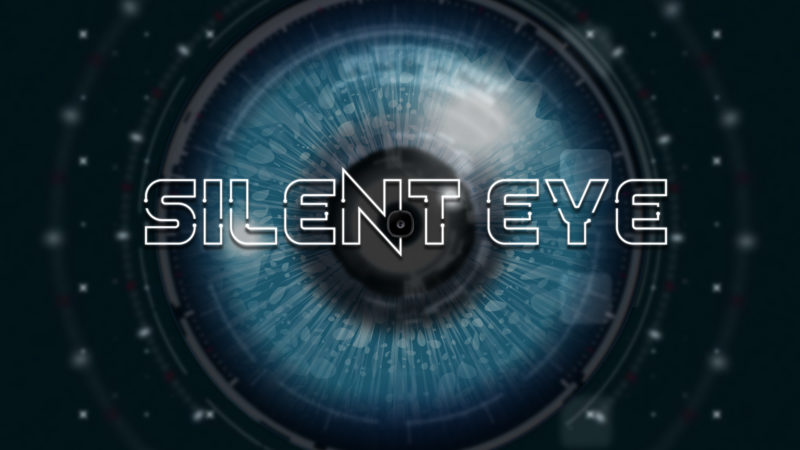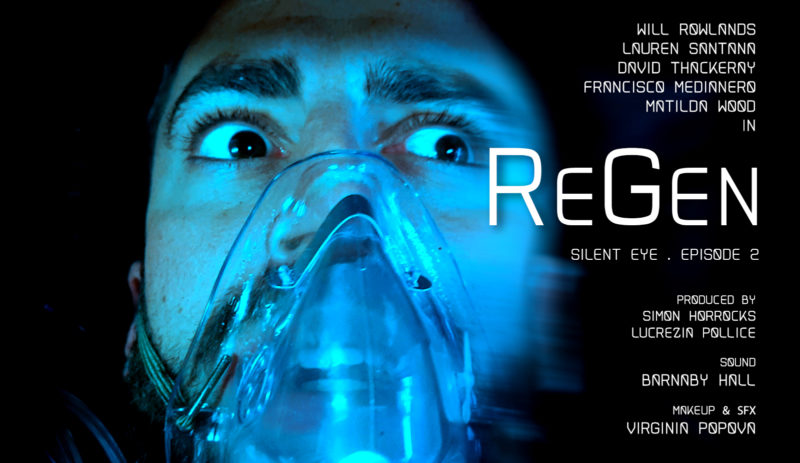A Year of Smartphone Filmmaking
There’s a lot written about the future of smartphone filmmaking. Millions of filmmakers around the planet now use these devices, including vloggers, journalists, fiction and documentary filmmakers. Travellers are turning their holiday videos into slick productions, using extra lenses and gimbals.
So, after 4 years of helping to run the Mobile Motion Film Festival, watching hundreds of films shot on smartphones from around the world, I decided it was time to have a go myself.
In January this year, I wrote a short script intending to shoot it without a budget on my Samsung S8. The story was about a woman who downloads an app which promises to improve her life by making better decisions for her. The short is called You Have Been Chosen.
I was coming to smartphone filmmaking after shooting a sci-fi feature on a consumer camcorder back in 2009-10. So, I had experience filming with almost no crew.
How did it turn out?
It turned out so well, we decided to make another one. And another.
We’re now on our 3rd short. These “shorts” have become episodes of a sci-fi anthology series called Silent Eye. Right now, I’m editing episode 3, The Unlocking Thought.
We’ve learned a lot in this last year, so here are my experiences.
Episode 1 – You Have Been Chosen
Kit used:
- Samsung S8 + FiLMiC Pro (using the flat setting)
- Sennheiser 416 shotgun mic
- Moondog Labs Anamorphic lens
- Zhiyun Smooth Q gimbal x 2
- RØDE boom pole and pistol grip
- Zoom H4n
- SanDisk Ultra 64 GB Dual USB Flash Drive USB 3.0 Type-C x 2
- My filmmaker friend Steve brought 2 reflectors and some portable lights
- Small redhead lamp and stand
Don’t forget to look after your phone
The worst thing that happened while filming with a smartphone was having my phone stolen (with half the day’s footage on it).
This was day 1, of the first short. It had been 3 years since I was last on a film set, so it felt like a real kick in the face. After 1 day of shooting, I had taken the kit back to my flat. I was about to upload the footage to my PC, but I was starving. So I went out to buy some food. And while I was messaging a friend, 2 guys on a motorbike rode up onto the pavement, snatched the phone and rode off.
I had to cancel the scheduled filming for the next day, plus I’d lost half the stuff we shot that day. Kindly, Samsung lent us a S8+ and exactly one month later, we were shooting again.
We improvised
When filmmaking “against the odds” (in other words, with very little funds), the ability to improvise is key. And I’m not just talking about the actors.
We were filming in an office, with a cafe on the ground floor. The cafe was closed, so we could film there. But the cleaners arrived and started using a noisy mop (or something). Is there another place we can use?
We went upstairs and used the staff common room. After rearranging a coffee table, 2 chairs and a pot plant, we managed to make something passable as a table by the window.
When we came to shoot the office scenes, we found workmen painting doors and lifting up floors. So we had to work round them (and their noise making tools).
Sound is important
Except for the 2nd episode, we didn’t have a trained sound recordist. But I own a basic sound recording kit (Sennheiser 416, Zoom H4n plus pole) and there were enthusiastic volunteers happy to give it a go.
The sound came out well enough. From the first episode, we only had to replace one short line of dialogue. So, despite the challenges of traffic noise, air conditioning and workmen’s tools, we managed to get reasonable sound (good enough can hear what everyone is saying).
In one scene, Zoe (lead actor) was having a phone conversation with her boyfriend. So why not use the voice recorder on her phone to get the sound? In the edit, I combined the audio from Zoe’s phone with the ambient audio from my phone to get a pretty good final result. So, for this scene, we had a crew of 1 (me).
It’s this kind of improvisation which frees you. What would have been a complicated and lengthy process (if you were filming with a regular sized crew), became a simple collaboration between director and actor.
Overall, everyone did a great job.
Episode 2 – ReGen
ReGen is about a gang who must bring their follow gang members back to life to find out the passphrases to unlock a Bitcoin wallet containing over $1m.
Kit used:
- Samsung S9 + FiLMiC Pro (using the natural setting)
- Zhiyun Smooth Q x 2
After watching Episode 1 at the MoMo Film fest, sound recordist Barnaby Hall offered to record sound for us for Ep 2. This was the first time I’ve had a trained sound recordist working on any of films. It was really great of Barnaby to offer and I really enjoyed working with him.
Barnaby brought his own sound recording kit, which included a shotgun mic, pole, mixer and a set of wireless lavalier mics. This meant all the actors would have a mic pinned under their shirt. Plus Barnaby would get overall sound with his boom mic too.
Less is more
After my experience shooting the first episode, I decided to ditch the Moondog Labs lens and to use the natural colour profile setting in FiLMiC Pro.
I understand that this may be disappointing to many of you.
Truly, everyone should make their own choice when it comes to which kit they prefer. Everyone has a different idea of the kind of film they want to end up with. Plus, everyone should explore their own way and discover which method and kit combination suits them best.
But I’ll tell you what I am aiming at, so you can understand my decision.
Colour
Firstly, I want to make the process of making an episode (from writing to editing) as fast as possible. I want to achieve this without compromising the key elements of my films: story and acting performances.
I found I was getting a great picture quality using the natural setting in FiLMiC Pro. When editing, I needed only a few quick adjustments to get the look I was happy with. It’s not my priority to spend days or weeks grading. It’s just not something I particularly enjoy and I don’t see any great benefits to the films I’m making.
Too fiddly
Secondly, I wanted to speed up the shooting process. Using the anamorphic lens meant the gimbal poked into shot. Also, I needed an extra counterweight for th gimbal. In addition, the lens clip for an android device covered the exposure meter.
That’s already quite a few issues, but I also found it added extra time to the shoot messing about with the lens and clip. Each time you use the lens, you have to mount it and make sure aligns with the smartphone camera lens precisely. Otherwise, you might get some lens shadow on the image.
Using the phone camera for its strengths
For Episode 2, I decided to really push the advantages of such a small, versatile and user-friendly camera. For this short, we would focus on a more “documentary style” filming approach.
For example, one of the last scenes was scripted to last 4-5 minutes. Normally filmmakers would block this scene, shot by shot. Instead, I told the actors to run the scene from beginning to end and the camera would follow them.
Operating the camera, I simply followed my instincts. Imagining for each take that I had stumbled upon this scene and must quickly capture what was taking place. So the actors ran through the scene for about 10 takes, each time something a little different would happen, which made it an interesting process for me and the actors absolutely loved it.
Meanwhile, Barnaby and I ended up in a dance, as he tried to keep himself out of shot while I moved the camera around unpredictably.
Episode 3 – The Unlocking Thought
Henry Talbot has invented a device which, by revealing a persona’s key thought to unlock their mind, works “800 times faster than traditional psychotherapy”. He’s able to help thousands of people towards happier lives – but can he help himself?
Kit used:
- Samsung S9 + FiLMiC Pro (using the natural setting)
- Zhiyun Smooth Q x 2
- Sennheiser 416 shotgun mic
- RØDE VideoMic Me
- RØDE boom pole and pistol grip
- Zoom H4n audio recorder
I used no extra lighting other than available light.
Guerilla filmmaking
As with previous episodes, we spent no budget on locations. We shot some scenes in places where a normal film crew would need permission. One scene takes place on the London underground. Another, inside and outside a busy pub.
We also filmed on the street several times.

Using the RØDE VideoMic Me
With this new addition to my smartphone filmmaking kit, we were able to film 2 scenes in ways we wouldn’t have otherwise.
In the car scene with Christian and Roger, I was able to film solo, with just me, phone and mini shotgun mic.
In one of the last scenes, Andrew (played by Emilio Ianucci) has locked himself in the bathroom and is threatening to take his own life. Henry (played by Roger Parkins) and the paramedic (played by Jane Hamlet) attempt to talk him out of it. I wanted to film this scene as “live” as possible. The scene last a few pages, but I wanted to shoot it from start to finish.
Normally, we would have had to film the corridor outside the bathroom shots first. Then film the whole scene again, from inside the bathroom. Instead, we shot both rooms simultaneously. We were able to do this because I have 2 Samsung S9s. So, in the corridor we had me operating 1 S9 and Andrea & Will on the boom + 416 mic. In the bathroom we had a “2nd unit”, with David operating the 2nd S9 + RØDE VideoMic Me.
This method helped us maintain the integrity of the scene, with each side of the door matching perfectly. Plus, we could film twice as fast.
The result
Of the 2 mics, the RØDE VideoMic is by far the cheaper. About £50 compared to £700 for the Sennheiser. Of course the audio quality is not at the standard of the £700 mic. There was some hiss and the audio itself is a little more tinny (bottom frequencies are missing).
However, I was able to remove most of the hiss using Adobe’s Audition. The quality was good enough for what we were trying to achieve.
Editing & Post Production
I have Adobe’s Creative Cloud on subscription (no affiliation). This gives me access to the entire collection of 20+ creative desktop and mobile apps including Premiere Pro, Audition, After Effects and Photoshop. The first 3 form the basis of all my post production work on the series so far.
Premiere has some built-in effects, like Warp Stabilizer and a whole range of audio effects. But clips in Premiere can also be sent to After Effect and Audition for more specialised and more powerful polishing and FX work.
All episodes have some CGI work in them. Mostly, this is screen replacement stuff. For things like, showing a call incoming to a phone. Or a specific film or video on a TV screen in a room. In episode 2, I added a light to the defibrillating machine. I also added a liquid into a syringe so I could animate being injected into a character.
In episode 3, I needed to add the MindBright system graphics onto a laptop monitor. This is the kind of CGI that (you hope) nobody notices, because it sits into the scene and looks natural.
With Audition, audio files that need cleaning or compressing can be sent from Premiere. This means you can go back and edit the audio file in Audition at a later date, and it will automatically update the file in Premiere.
Mastering
I shot mostly in 2k. But I edited at 1080p. This gave me some room to crop the shots differently, if needed. Then mastered each episode at 1080p. The show is to be distributed via Amazon (for the moment), and they only accept HD. So no need to worry about 2k or 4k masters.
Update Oct 2019
Four episodes are now available to view on Amazon Prime (USA, UK and Germany only).
Watch SILENT EYE on Amazon nowRead more from the Silent Eye “making of” diary.
Eager to learn more?
Join our weekly newsletter featuring inspiring stories, no-budget filmmaking tips and comprehensive equipment reviews to help you turn your film projects into reality!
Simon Horrocks
Simon Horrocks is a screenwriter & filmmaker. His debut feature THIRD CONTACT was shot on a consumer camcorder and premiered at the BFI IMAX in 2013. His shot-on-smartphones sci-fi series SILENT EYE featured on Amazon Prime. He now runs a popular Patreon page which offers online courses for beginners, customised tips and more: www.patreon.com/SilentEye



